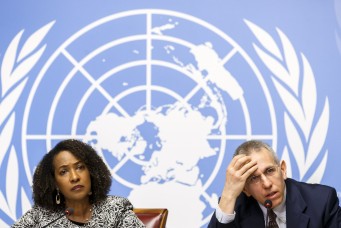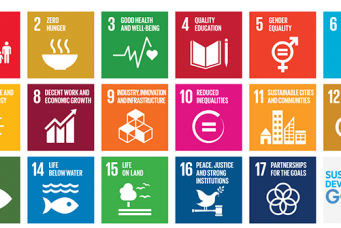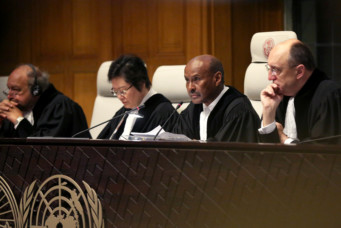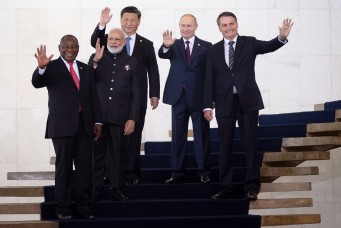Five Years after Agreeing on the Sustainable Development Goals: Where are We?
Much more needs to be done on the SDGs, how they are reported, and how they are ultimately evaluated.

United Nations Sustainable Development Goals
In 2015, the United Nations proudly announced the Sustainable Development Agenda with its 17 Sustainable Development Goals (SDGs). They were considered an improvement over the earlier set of Millennium Development Goals (MDGs) in that they were more comprehensive and with better agreed to measures for performance: 169 targets and more than 230 indicators. The intention was to use them to guide world development from 2015-2030 with the aim of ending poverty, achieving peace and ensuring a more sustainable future for all. Nearly all countries signed on.
Five years into implementation, what has been achieved and what is still lacking? And to what extent has the COVID-19 virus impacted implementation?
In the annual Sustainable Development Goals Report for 2020, the United Nations states that progress has been achieved in realizing the SDGs in many places, but that more needs to be done. Areas where progress has been achieved included: maternal and child health, access to safe water, a drop in a number of communicable diseases, expanding access to electricity and having more women representatives in parliaments.
In an attempt to adopt an optimistic perspective, the UN showcases good practices in achievement of the goals, so that other countries can derive lessons and possibly replicate the success stories. Yearly celebrations, coinciding with the UN Public Service Day on June 23, are organized to recognize and award public servants around the world who have success stories to share demonstrating innovative and effective service delivery approaches in line with the SDGs.
However, over the five years of implementation, many challenges have been identified as hindering the full realization of the SDGs. Economist Jens Martens, for one, claims that there is very little to celebrate after five years of implementation, that countries are “completely off-track” regarding many of the 17 SDGs, including being off track on poverty eradication, reduction of hunger around the world, and dealing with climate change. He adds that things have drastically worsened as a result of the COVID-19 pandemic, perceived by many as an unprecedented crisis.
A closer look at the type of hurdles and challenges discussed, shows that some of them can be classified as pre-COVID-19 challenges and some as post-COVID-19. For example, pre-COVID challenges include faults found with the rating system for world performance on SDGs implementation, the excessive politicization related to reporting on achievements, the inability of many developing countries to collect and report on the various indicators agreed to, and other contextual challenges in various nations. Although it is voluntary, there is a lot of politics involved in reporting on the achievement of the SDGs. Especially when reporting on SDG 16, related to achieving effective, accountable and inclusive institutions, the situation is very fluid. Nations pick and choose what to report on and no one argues, or contradicts these reports when presented during the UN National Assemblies held for that purpose. Criticism is directed as well to the overall general ratings given to countries referencing their success in achieving the SDGs, based on the SDG Index developed by Jeffrey Sachs. In this system, a number of Scandinavian countries are ranked as top performers although they are recognized as excessive consumers of natural resources, which defies the concept of sustainability. As for the measurement indicators, many developing countries have classified the indicators as either Tier II or Tier III indicators, meaning that either data for them is not available, or that countries do not have the required resources and capacities to collect and analyze. Other pre-pandemic challenges hindering better performance in achieving the SDGs are related to the contextual setup in many of the developing world nations. In the African continent for example, Pre-COVID-19 hindrances to implementation of the SDGs included issues related to poor governance systems, weak statistical institutions, overall limitation in resources and rapid population growth rates in some countries.
As for the estimated negative impact of the pandemic on SDG progress, it is quite alarming to say the least. According to SDG Report 2020, on a global basis, 71 million people may fall into extreme poverty in 2020, denoting the first rise in global poverty since 1998. Half the global workforce, may have lost 60% of their income during the first month of the pandemic. About 1.6 billion workers in the informal sector worldwide are in danger of losing their jobs. Women and children are amongst the groups hit the hardest by the pandemic, due to the disruption, and sometimes suspension, of vaccination and regular health services. Nearly 70 countries were reported to have stopped their vaccination programs during the pandemic. This may lead to rising numbers of infant and maternal deaths; hundreds of thousands more infant deaths expected, and tens of thousands increase in maternal deaths in 2020. With school closures and nearly 90% of students worldwide having to stay home, over 370 million missed the school meals they drastically needed. And with more poverty, there will be an expected escalation in many other problems like child marriage, child trafficking and child labor.
The situation is worse off in Africa. The SDGs Center for Africa reports that the continent is off-track in achieving 13 of the 17 SDGs. A preliminary assessment of the impact of COVID-19 on the SDGs in Africa points to an expected additional 60 million Africans being pushed into poverty, the worsening of food insecurity and more than doubling the number of people facing hunger, increased unemployment, rising debt and more difficulties faced in financing the SDGs.
Recommendations:
A new initiative titled: “The Decade of Action”, was started by the UN in recognition of the fact that ten years are left for the full realization of the goals, and therefore everyone—governments, civil society, private sector and citizens of the world—need to act together and work on accelerating the achievement of the SDGs. Obviously, this is much easier said than done. A number of scholars have been sharing their thoughts about what needs to come next and the need for more specific directions to guide us on the way forward. Following is a synopsis of some of these ideas:
- More Serious Commitment by Government: First governments need to take the SDGs more seriously. Lots of time and effort get wasted in official meetings and reporting tasks that are often quite politicized.
- More Active Monitoring and Reporting Role for the Civil Society: For overcoming the problem of excessive politicization in reporting on some SDGs, especially SDG 16, there needs to be a mechanism whereby civil society organizations, academia and research centers play a more dominant role in collecting data, monitoring and reporting on performance. It should not be left solely to nation states and their Voluntary National Reports, but shadow reporting by independent more objective civic society organizations is called for.
- Securing More Funding Resources and Technical Assistance to Developing Countries: International funding organizations such as the World Bank need to play a more active role. In their 2020 article on the SDGs, World Bank Group’s Senior Vice President for the 2030 Development Agenda Mahmoud Mohieldin and Special Representative to the UN Jos Verbeek give three main suggestions for speeding up the SDGs implementation over the coming years through the World Bank’s active involvement as an intermediary firstly through attracting the private sector to finance SDG related programs; secondly, by providing knowledge products about development, and thirdly, by supporting the data frameworks needed for tracking progress in achieving the SDGs.
- Building Up Statistical Institutes and Capacities: The call for further support of countries’ statistical data collection, analysis and reporting efforts has been seconded by the UN Secretary General as a prerequisite for monitoring progress on SDGs. Many national statistical offices stopped operation during the pandemic and this may lead to a huge setback in reporting unless international development organizations jump in and provide the needed technical and financial support.
Overall, the benefits of the SDGs are great, but implementation can be improved on by overcoming the identified hurdles.
Laila El Baradei is professor of public administration at the Department of Public Policy and Administration at the American University in Cairo. She was the acting dean for the School of GAPP during the academic year 2013/2014. She previously served for more than fourteen years as a faculty member at Cairo University. She was a contributing author to the Egypt Human Development Report in 2004, 2008, and 2010, the Millennium Development Goals Second Country Report for Egypt in 2004, and the World Bank Country Environmental Analysis for Egypt in 2005. She contributes regularly to the Cairo Review. On Twitter: @Egyptianwoman.
Read More



